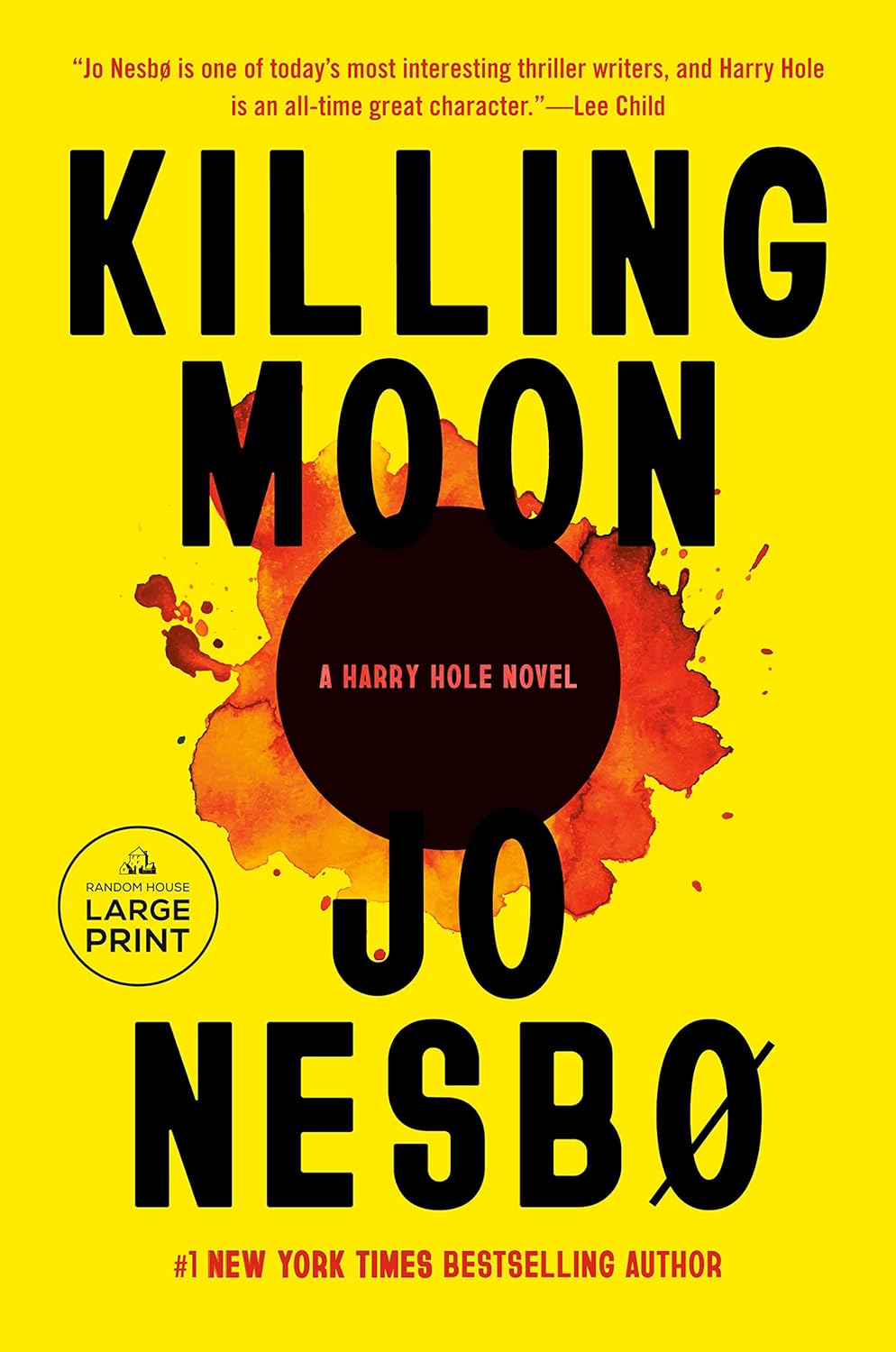 The cover of Killing Moon, the most recent of the Harry Hole novels by Jo NesbØ, features a large black dot. It’s a reference to the killing moon of the title, but this black hole could be a stand in for this nearly 500-page time sink. Not that it’s a bad book, but Killing Moon does represent a commitment, one the author references when he compares an arduous part of police work to “a book that you don’t want to finish. but you’ve already put time into, so you keep going…” or words to that effect. NesbØ has a sense of what he’s created here, and he’s winking at us.
The cover of Killing Moon, the most recent of the Harry Hole novels by Jo NesbØ, features a large black dot. It’s a reference to the killing moon of the title, but this black hole could be a stand in for this nearly 500-page time sink. Not that it’s a bad book, but Killing Moon does represent a commitment, one the author references when he compares an arduous part of police work to “a book that you don’t want to finish. but you’ve already put time into, so you keep going…” or words to that effect. NesbØ has a sense of what he’s created here, and he’s winking at us.
Killing Moon is a Norwegian crime thriller, a sub-genre that seems to involve characters who have lost wives and children to serial killers, only to hook up with new serial killers while terminally alcoholic detectives put their lives on the line chasing ghosts while haunted by the serial killers who snuffed out their wives and children… and those are the bright spots in these stories.
The terminal alcoholic in this book is Harry Hole, a depressed, depressing antihero who is also the disgraced serial killer catching wunderkind of the Oslo police department. He’s made an enemy of almost everyone in the department, but they desperately need him.
The book opens with Harry deciding that he’s going to drink himself to death at long last during a self-imposed exile in Los Angeles. There, he finds himself defending an aging movie star from Mexican mafia loan sharks. With his and her lives on the line, he accepts an offer from a millionaire scumbag named RØed, who is accused of murdering two women he “sugar daddies.” Harry will do the job if RØed will pay off the Mexicans.
Deal! And he’s on the case, much to the chagrin of the Oslo police—with the exception of Katrine, a detective with whom Harry has a deeply tragic and erotic connection (is there any other kind in such a book?) Still, lust and guilt aside, she cannot provide him with any details about the official investigation into the murders. The clock is ticking on the Mexicans, however, and Harry will soon run out of time to solve the case, clear RØed, and get his LA friend sprung from a certain death sentence.
Harry proceeds to assemble a motley crew of helpers from his network in Oslo. The group includes a police psychologist who is dying of cancer, a drug dealer cab driver, and a bent cop suspended on suspicion of stealing drugs. They quickly make progress that’s eluded the police, enraging the powers that be on the force while receiving tacit approval to keep moving.
In parallel, we meet the real killer and follow his pathological progress toward his true love. We don’t know exactly who the target of his deranged love is, but we get the sense it’s someone close to Harry Hole. The killer hates RØed, and it’s that hatred that powers his homicidal spree.
Jo NesbØ is a major bestselling author, so his style of writing clearly has a large fan base. It’s not for me, though. The problem may be partly one of translation. I felt like there was something missing in the book, despite its substantial length. Translation is not just about language. It encompasses culture, and I don’t find myself relating to the Norwegian outlook on things. I’m not a big fan of books that revel in the darkness of the human soul. I’m too much of a brain dead American, I guess.
NesbØ is very skilled at laying out a good, suspenseful mystery, however. If you’re into this sort of thing, it’s an engrossing read, though there are a lot of characters to keep track of, and if you don’t have a head for Norwegian names, you might find yourself getting a little confused. Otherwise, that black hole on the cover might start to seem like a good symbol of what’s happening to you as you read it.
